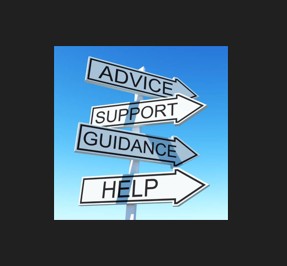By Ontario Minor Hockey Association, 09/16/24, 11:45 AM EDT

As players return to the ice for Evaluations or practice, they may be wearing their equipment for the first time since last season. Straps and fasteners could need to be adjusted for growing bodies in order to provide a safe, secure fit. This is also an important time to remind all those involved with player safety about the proper ways to wear your equipment.
We’ve highlighted a few areas of concern that should be focused on. Safety is and has always been considered a shared responsibility among Trainers, Coaches, Officials, Parents and Players. Everyone has a role to play in ensuring safety for all our participants.
In light of recent trends in equipment being worn improperly – specifically, helmet facemasks, mouthguards, neck guards and the goalie throat protector, commonly referred to as the ‘dangler’ – we’ve created a guide for all participants to show the correct ways to wear your equipment.
On-ice officials will be enforcing Hockey Canada rules related to the use of illegal equipment, which address both not wearing the piece of equipment, and not wearing it properly, with the ability to call penalties.
HELMET/FACIAL PROTECTORS

The primary concern that has been identified with helmets is how players wear their facemask and specifically the chin cup. Players have been wearing their facemask loosely which creates “hang” as seen on the left side of the graphic. When wearing a helmet with a loose facemask/chin cup, any contact with the player could cause the facial protector to strike the players face, potentially risking injury to the player.
A properly worn facial protector should fit to allow one finger to be placed snugly between the bottom of the chin and the chin cup of the protector.
MOUTHGUARDS

Whether they’re chewing on it or letting them hang loosely from their mouths, players often don’t keep their mouthguard properly in place. This means that the mouthguards aren’t being used as intended to provide maximum protection for the player.
Mouthguards must be properly fitted to keep the player both comfortable and safe, and should remain securely in place at all times while on the ice in both practices and games.
NECK GUARDS

Players have been seen to be altering the neck guard to reduce the area they are intended to protect.
The throat protector (Neck Guard) should be snug but not uncomfortably tight. Bib-style protectors are worn beneath the shoulder pads and offer increased protection. The throat protector should completely cover the throat. The padding should not be altered in any way and it should be worn while participating in all on-ice activities.
GOALIE THROAT GUARD (THE ‘DANGLER’)


Goaltenders are increasingly wearing their dangler improperly. Most often goaltenders are attaching their dangler tight against the helmet. This is a safety concern as it does not protect the goaltender’s neck/throat as intended.
The dangler should match the size of the helmet. It should also correspond to the helmet’s profile, whether it’s rounder or more v-shaped, and extend past the cage to reach or come close to the ear holes. For better stability and to prevent the dangler from moving into the field of vision—something that often happens when it’s attached only at the corners—tie it through the ear holes as well. Using both holes at the back edge of the dangler can also help reduce tilting. Ensure the lacing is short enough to eliminate gaps, keeping the protector securely in place and preventing it from getting stuck under the helmet’s edge.
EMPHASIS ON ENFORCEMENT
Rule 3.6 (d) states: If the helmet, facial protector, or throat protector of a player comes off while play is in progress, the player will replace the piece of equipment (properly fastened) or will proceed to the Players’ Bench for a substitution. If the player participates in play in any manner without that piece of equipment, play must be stopped immediately and the player penalized under Rule 10.6 (a) – Illegal Equipment.
In this case the call would be a Minor Penalty.
Note that all of all of the guidelines within this rule that apply to helmets, facial protectors and throat protectors will also apply to mouth guards and the goaltender throat protector (‘Dangler’).
Rule 10.6 (d) states that after one warning to the team, a Misconduct penalty will be assessed to any player who wears their helmet, facial protector, neck guard, or mouth guard improperly (Rule 3.6 (f) – Protective Equipment).
All stakeholders of our game must play a role in player safety and ensuring equipment is worn properly to ensure maximum safety for our players.
FULL PLAYER EQUIPMENT
https://storage.googleapis.com/omhacontent/Equipment%20Guides/Player/story.html
FULL GOALIE EQUIPMENT
https://storage.googleapis.com/omhacontent/Equipment%20Guides/Goalie/story.html
Tag(s): Home ADMINISTRATION TRAINERS Hockey 101 Equipment Safe & Fun Education Home



